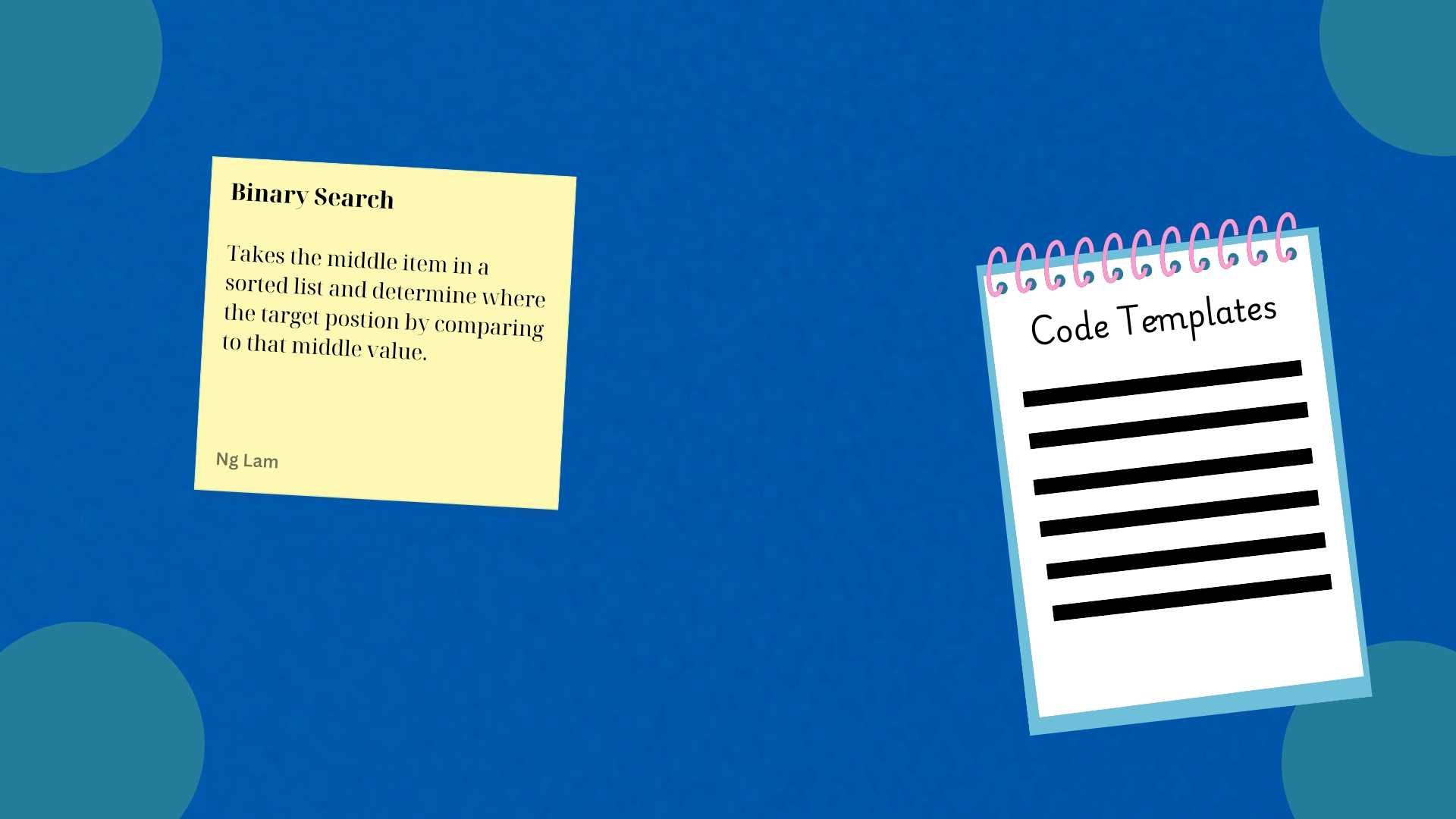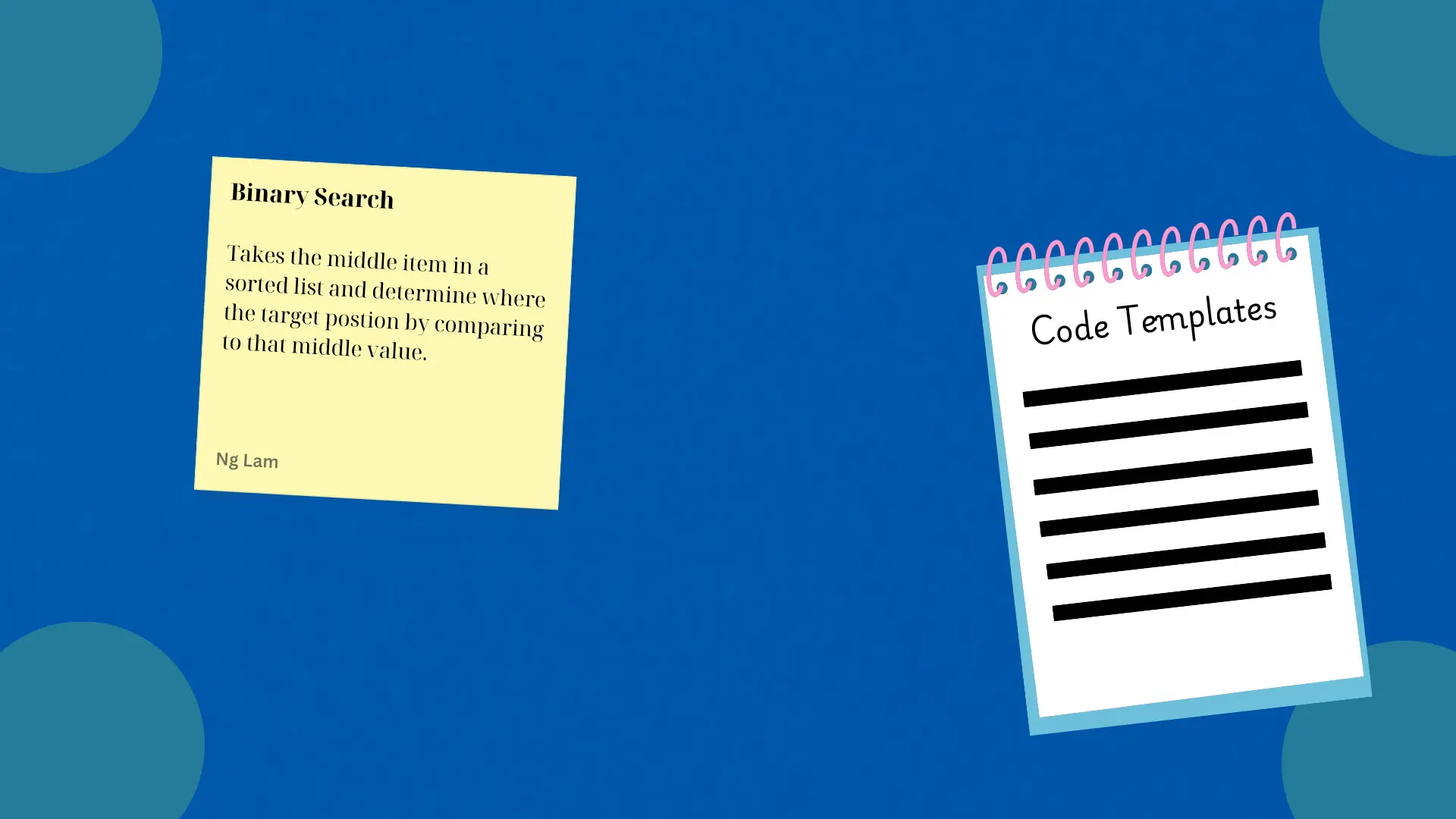

Algorithms Cheatsheet
When tackling coding problems, especially in competitive programming or technical interviews, recognizing common patterns is a game-changer. These patterns — known as algorithm templates — provide reusable code structures that simplify solving a wide range of problems.
Let’s break down the most powerful ones:
Binary Search
When to Use
- The input is sorted
- You’re looking for a target value, or need to find boundaries (first/last occurrence)
- Problems with monotonic conditions — as values increase/decrease, something predictable happens
How It Works
Binary search cuts the search space in half each time, reducing time complexity from O(n) to O(log n).
Code
def binary_search(arr, target): left, right = 0, len(arr) - 1 while left <= right: mid = (left + right) // 2 if arr[mid] == target: return mid # or customize for boundary elif arr[mid] < target: left = mid + 1 else: right = mid - 1 return -1Two Pointers
When to Use
- Working with sorted arrays or linked lists
- Looking for pairs or triplets with a certain condition (e.g., sum)
- Problems involving converging or diverging pointers
How It Works
Two pointers move inward/outward to scan from both ends, reducing time from O(n²) to O(n).
Code
def two_pointer(nums, target): nums.sort() left, right = 0, len(nums) - 1 while left < right: curr_sum = nums[left] + nums[right] if curr_sum == target: return [nums[left], nums[right]] elif curr_sum < target: left += 1 else: right -= 1Sliding Window
When to Use
- Substrings or subarrays problems (e.g., longest/shortest, maximum/minimum)
- Contiguous sequences
- Performance optimization for repeated work
How It Works
The window slides over the input, maintaining a subset of the data while updating the result.
Code
def max_subarray_sum(nums, k): window_sum = sum(nums[:k]) max_sum = window_sum for i in range(k, len(nums)): window_sum += nums[i] - nums[i - k] max_sum = max(max_sum, window_sum) return max_sumHash Table
When to Use
- Frequency counting
- Lookup problems: duplicates, anagrams, sums
- Associative mapping of keys to values
How It Works
Hash tables allow O(1) average-time insertion, deletion, and lookup.
Code
def has_duplicate(nums): seen = set() for num in nums: if num in seen: return True seen.add(num) return FalsePrefix Sum
When to Use
- Range queries like sum between
iandj - Reducing nested loops in subarray calculations
- Immutable data where multiple queries are made
How It Works
Pre-compute cumulative sums so queries can be answered in O(1) time.
Code
def prefix_sum(nums): prefix = [0] for num in nums: prefix.append(prefix[-1] + num) return prefix
# Usage: sum from index i to j is prefix[j+1] - prefix[i]Final Thoughts
These templates are not just snippets — they represent powerful mental models. By internalizing them, you’ll reduce boilerplate, spot patterns faster, and elevate your problem-solving game.
Practice using each one in real problems. Soon, they’ll become second nature.
← Back to blog